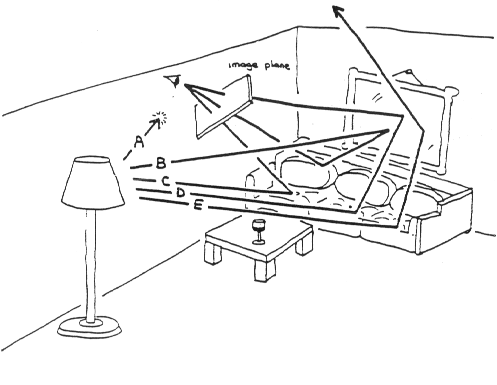Illumination Models
Computer Graphics Jargon:
|
 |
Illumination Models:
Java3D : Real Time illumination model : lots of approximations. No Shade, simplified transparency, no reflexion (miror). OpenGL, SGI trick : two time the same scene to simulate real time reflexion on the floor.
Raytracing, Radiosity...
|
|
From Physics we can derive models, called "illumination models", of how light reflects from surfaces and produces what we perceive as color. In general, light leaves some light source, e.g. a lamp or the sun, is reflected from many surfaces and then finally reflected to our eyes, or through an image plane of a camera.
The contribution from the light that goes directly from the light source and is reflected from the surface is called a "local illumination model". So, for a local illumination model, the shading of any surface is independent from the shading of all other surfaces.
A "global illumination model" adds to the local model the light that is reflected from other surfaces to the current surface. A global illumination model is more comprehensive, more physically correct, and produces more realistic images. It is also more computationally expensive. We will first look at some basic properties of light and color, the physics of light-surface interactions, local illumination models, and global illumination models.
Scan-line rendering methods use only local illumination models, although they may use tricks to simulate global illumination. Many current graphics images and commercial systems are in this category, but many systems are becoming global illumination based.
The two major types of graphics systems that use global illumination models are radiosity and ray tracing. These produce more realistic images but are more computationally intensive than scan-line rendering systems.